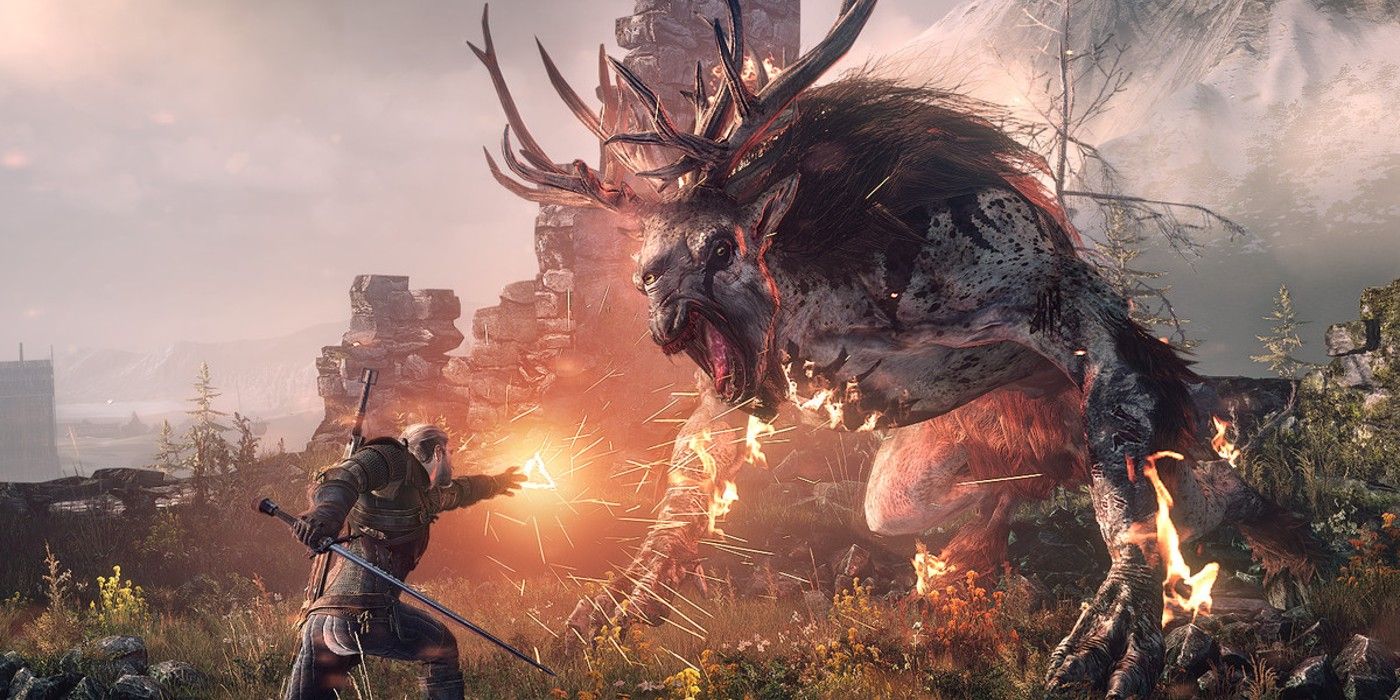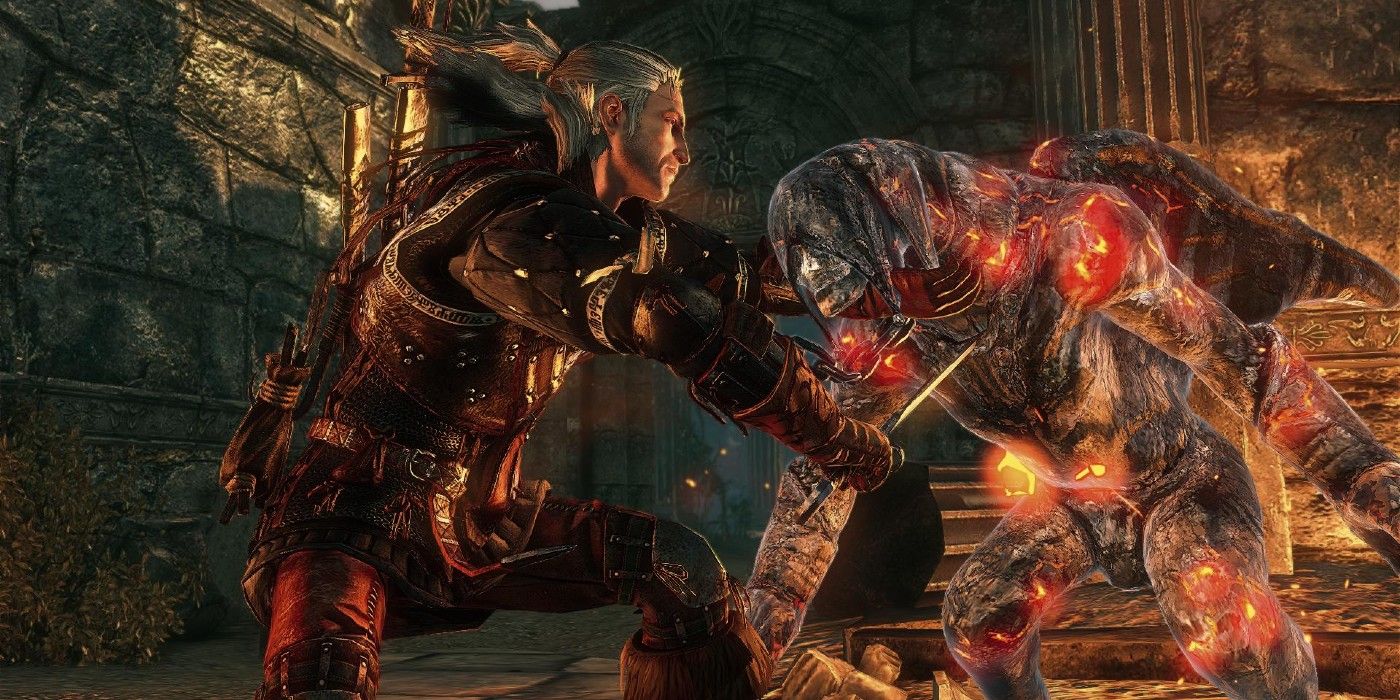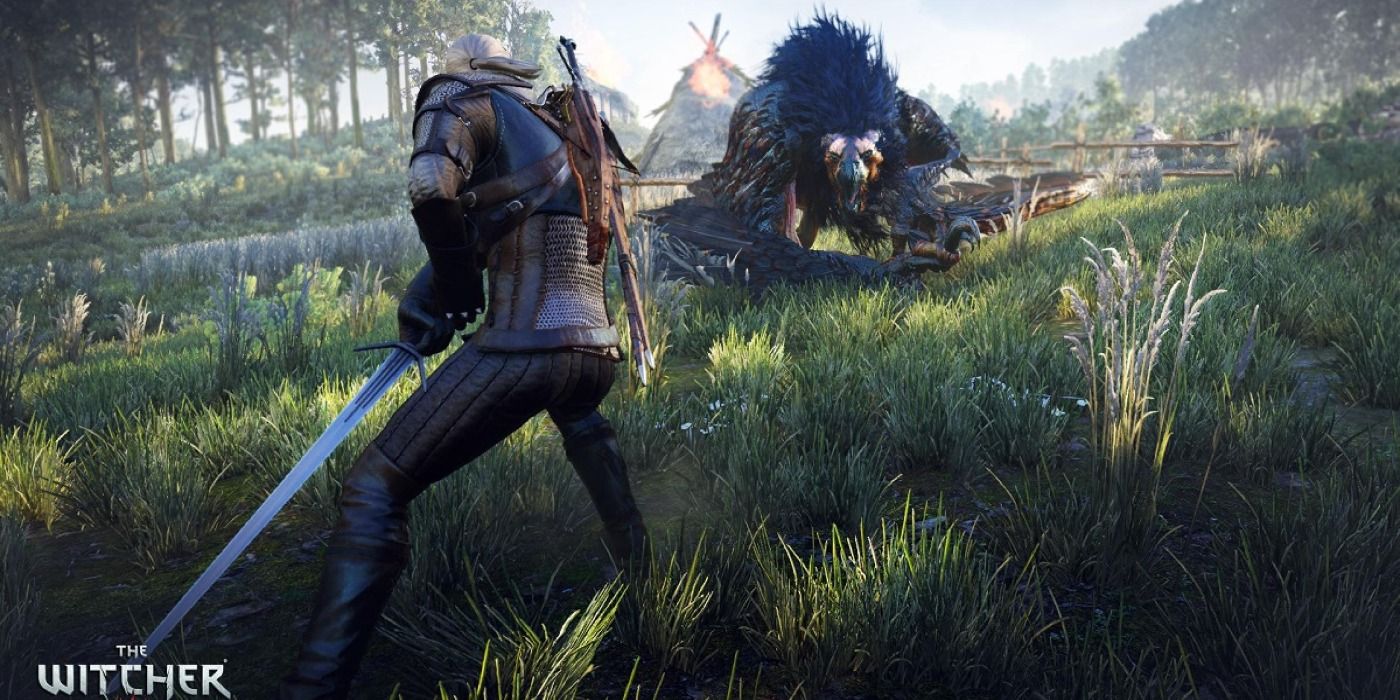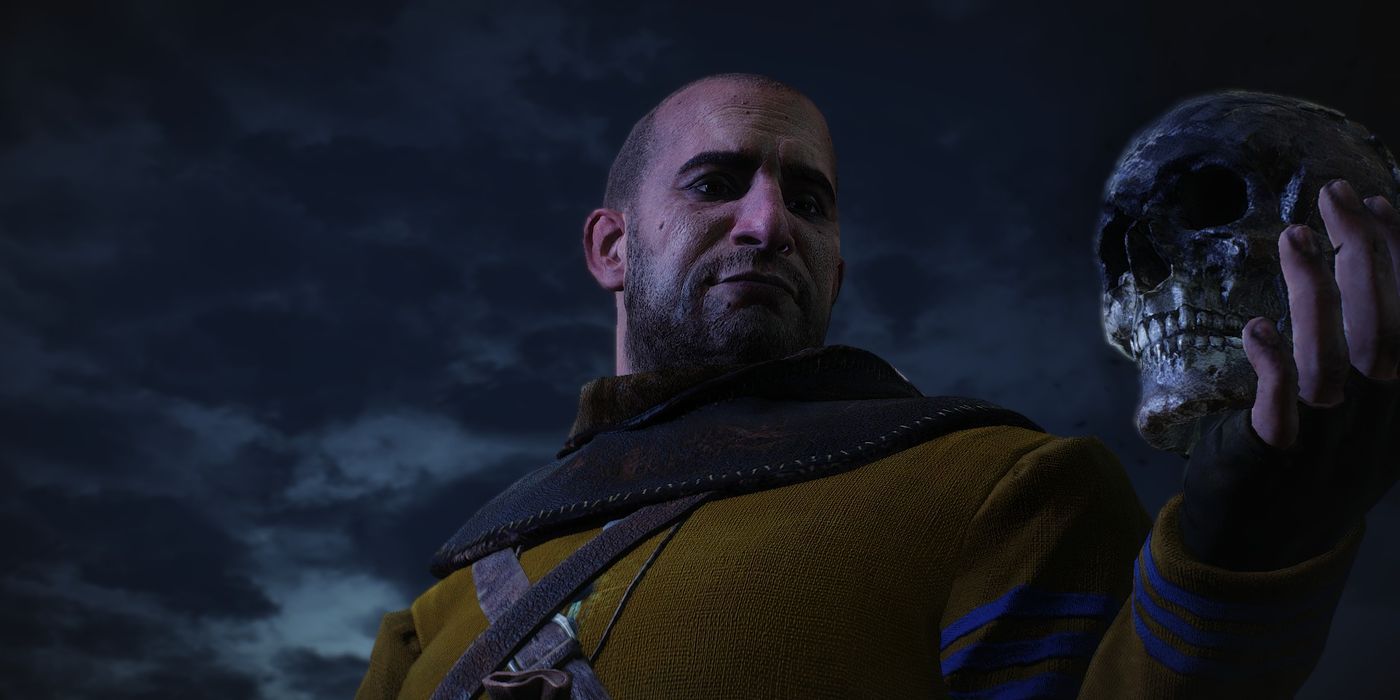The Witcher 3: Wild Hunt has many fearsome monsters to battle across the Continent, but their origins aren’t as accurate to their real-life counterparts as some may believe. Witcher’s monsters come in all shapes and sizes, featuring famous creatures from mythology and real-world cultures. As a result, many beasts’ roots influence their weaknesses and strengths in battle, benefitting knowledgeable players who understand the true nature of the monster they face. Additionally, it can be fascinating to investigate the humble beginnings of The Witcher series’ most popular and powerful creatures.
The Witcher 3 is a popular action RPG, fantasy adventure game where players control Geralt of Rivia, a dangerous and successful Witcher. The world is filled with monsters and magic, leaving players at the mercy of terrifying and powerful creatures. Thankfully, Witchers are equipped with unique abilities of their own and weapons to combat the fiercest of foes across the Continent. Monsters vary significantly in size, strength, and origin, but they don’t always accurately reflect their real-world sources and take many creative liberties for more fantastical settings and world-building.
Unfortunately, it would take days to deconstruct the origins of every monster included in The Witcher 3’s base game and DLCs. Still, there are several with exciting backstories, powers, and unique designs. Players’ choices often change the world’s outcome and leave a lasting mark throughout the series. Those wishing to avoid mistakes with specific monsters and beings should understand their many different origins.
The Witcher 3’s Gargoyles Pack A Punch
The Witcher 3’s terrifying monsters are often grouped by their powers or elemental origins. Gargoyles are large, winged creatures that lurk around mage laboratories. They are unnatural beasts brought to life from magic and maintain a terrifyingly still presence when not engaged. Their thick armor and devastating close-range attacks usually keep most players at a distance. The Witcher 3 has many Witcher Signs to use in combat, but Quen is the most useful when facing Gargoyle enemies. They are some of the most challenging monsters to face, with most of Geralt’s equipment emphasizing close-quarters combat. Unfortunately, little is known about the Gargoyles, considering their artificial creation and connection with mages further hide their actual purposes.
Unlike many other monsters in real-world mythology, The Witcher 3's gargoyle monsters have an unfortunately tame legacy and explanation. While the name "gargoyle" is much more modern, the use of gargoyles originates from Ancient Egypt, according to Ravenwood Castle. Carved beasts adjourned large constructions to filter out water, similar to modern gutters. Creatures like lions and cats frequented early designs, but more monstrous appearances arose to make Pagans feel more familiar when entering churches in the Middle Ages. The gargoyles also adapted a new spiritual meaning, with their fearsome appearances warding evil from the holy land. According to Medieval Life And Times, the term "gargoyle" is adapted from the French word "gargouille" that translates into the sound of gargling water, referencing the gargoyle’s original purpose.
The Witcher 3 Features Griffins, A Popular Myth
The Witcher 3 pits Geralt of Rivia against Griffins early, teaming players up with Vesemir to take down a Griffin rampaging across the countryside. These beasts can be challenging to conquer, but their Archgriffin counterparts are even more deadly. The Archgriffin is a subspecies of Griffin and one of The Witcher 3’s most powerful enemies to defeat. Archgriffins utilize several combat methods to decimate their foes; combined with its increased health and damage output; players should be wary of seeking these creatures out. According to the game’s bestiary, Griffins once dwelled in the mountains but moved territories once humans intruded on their borders and offered a more accessible food source. Thankfully, The Witcher 3's Geralt of Rivia is capable of defending humanity against its raging talons.
There is some debate concerning the origin of real-life griffins, as their use in mythology, art, motifs, and other ancient culture appears across several continents. The griffin may have originated in Asia and spread thanks to merchant trading along the Silk Road. Ancient Origins confirms that traders would have traveled through the Mongolia Desert, home to hundreds of Protoceratops remains whose frills and beaks resemble birds while their skeletal feet resemble talons. The Ancient Greeks connected them to Zeus and Nemesis, Hindus depicted Vishnu’s mount as a similar bird hybrid, and the Egyptians and Persians utilized similar designs in artwork and architecture. Since ancient civilizations don’t frequently appear in The Witcher 3’s story or side quests, it’s understandable that these creatures’ legacies had to be adapted.
Witcher 3’s Gaunter O’Dimm Resembles A Crossroads Devil
The Witcher 3 is fond of proving monsters can look like humans and vice versa, but the most powerful example of this is Gaunter O’Dimm. Originally introduced as a mirror merchant, it swiftly becomes apparent that the salesman is much more powerful than he lets on. Gaunter O’Dimm’s true trade grants wishes that eventually backfire on the client. However, he can also stop time, effortlessly cast powerful enchantments, and change the fabric of reality itself. According to Gaunter himself, he is not a Djinn or a demon, and those who discover his true nature are killed or suffer a fate worse than death. Despite his mysterious origins, many hints throughout real-world mythology suggest his real identity.
Like many other monsters, The Witcher 3's Gaunter O’Dimm takes inspiration from a darker side of mythology. While he has yet to confirm his species or origins - other characters refer to him as “Evil Incarnate” - various abilities and peculiar habits hint toward his true identity. When Gaunter O’Dimm meets Geralt at the crossroads in The Witcher 3: Wild Hunt - Blood And Wine DLC story, it's referencing crossroads demons from many mythologies. HiddenRemote cites that the English used to bury criminals at crossroads, and folklore from the 1930s references deals with devils being made at crossroads. Papa Legba is one of Hoodoo culture’s most famous demons, who appeared at crossroads to deal with desperate individuals. While it’s unlikely for Gaunter O’Dimm’s identity to ever be confirmed, he’s likely a devil from another realm harvesting souls to torment, given the real-world connections.
Despite the many real-world inspirations for The Witcher 3’s many characters and monsters, there are many original beasts in the franchise as well. Geralt of Rivia explores many corners of the Continent and defeats dozens of threats to civilized life, but must protect both worlds. Players who understand the motivations and origins of various monsters can influence their save files more positively. The Witcher 3: Wild Hunt is scheduled to receive a new DLC in the coming months based on the Netflix show, giving players more opportunities to explore the world.
Sources: Medieval Life And Times, Ravenwood Castle, Ancient Origins, New World Encyclopedia, Britannica, HiddenRemote




